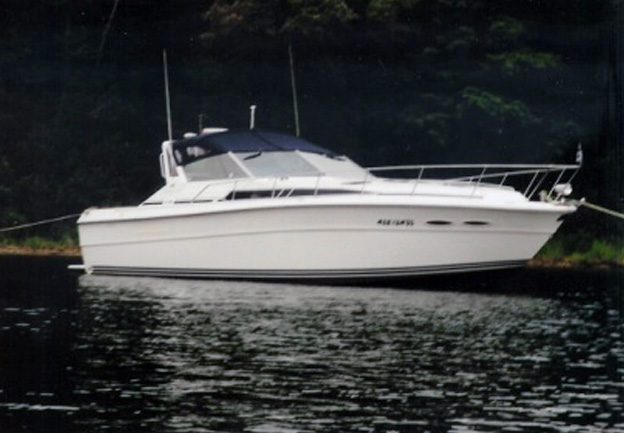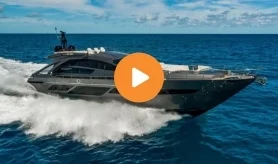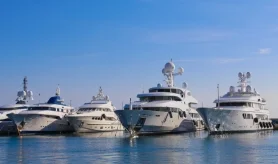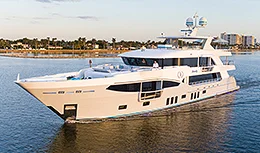- Alaskan Yachts
- Azimut Yachts
- Back Cove Yachts
- Beneteau Yachts
- Benetti Superyachts
- Bertram Yachts
- Boston Whaler
- Broward Yachts
- Buddy Davis Sportfish
- Burger Yachts
- Cabo Yachts
- Catamarans
- Carver Motoryachts
- Center Console
- Chris-Craft Yachts
- Cruisers Yachts
- DeFever Trawlers
- Dufour Sailboats
- Fairline Yachts
- Feadship Yachts
- Ferretti Yachts
- Filippetti Yachts
- Formula Yachts
- Fountaine Pajot Cats
- Grady-White
- Grand Banks Trawlers
- Hargrave Yachts
- Hatteras Yachts
- Hinckley Picnic Boats
- Horizon Yachts
- Hydra-Sports
- Intrepid Boats
- Jarrett Bay Sportfish
- Jeanneau Yachts
- Kadey-Krogen Trawlers
- Lazzara Yachts
- Lekker Boats
- Luhrs Sportfish
- Marlow Yachts
- Maritimo Yachts
- Marquis Yachts
- Mazu Yachts
- McKinna Motoryachts
- Meridian Yachts
- Midnight Express
- MJM Yachts
- Mochi Craft
- Neptunus Motoryachts
- Nordhavn Trawlers
- Nordic Tugs
- Numarine Yachts
- Ocean Alexander Yachts
- Ocean King
- Offshore Yachts
- Outer Reef
- Oyster Sailing Yachts
- Pacific Mariner Yachts
- Palmer Johnson Yachts
390 Sea Ray Express Cruiser
![]()

Source: Peter Bohr, Sea Magazine
Sea Ray’s 390 Express Cruiser brought Euro style at a stateside price
The sign on the Sea Ray dealer’s desk read, “The bitterness of poor quality remains long after the sweetness of a low price is forgotten.”
Sales hype? Perhaps. After all, every boat builder insists it produces a high-quality craft.
Sea Ray is not exactly a little-known builder selling mega-buck, gold-plated custom designs. Instead, the company is one of the world’s largest marine manufacturers, turning out boats like Ford turns out Escorts.
Sea Rays are mass-produced and popularly priced — not exactly the traits one necessarily associates with exemplary quality.
Yet it seems Sea Rays truly are good boats.
“I really like them,” said marine surveyor Bunker Hill of Maritime Consultants of Newport Beach, California. In his surveys of Sea Rays, he finds no consistent problems common to the marque.
Their hulls are stout, their fittings and hardware are high grade. “You can safely say they’re a step above entry-level boats.”
Now in its 36th year, Sea Ray makes a 13 foot jet boat, a 65 foot motoryacht and 60 models of almost every size in between. But among all of the larger — non-runabout — boats Sea Ray has produced over the years, the 390 Express Cruiser still ranks among the company’s most popular models.
Indeed, the 390 is one of the most popular express boats ever built, from any manufacturer. The boat is a happy confluence of attributes: a huge cockpit, a well- conceived interior and of course, quality construction at a most reasonable price. Big and Distinctive
Although big Euro-style express cruisers may be all the rage in the 1990s, in the early 1980s there were virtually no examples of the breed in the American market as large as the 390. Making its debut in 1984, the 390 spans just under 40 feet.
Moreover, the boat is exceptionally beamy.
The overall length, along with its nearly 14 feet of beam, meant Sea Ray’s designers could give the boat a really big interior. The sleek profiles of Euro-style express cruisers are often long on good looks, but short on interior living space. The 390, however, boasts an expansive interior with two staterooms, a saloon, a galley and a fully outfitted head compartment — plus 6 feet, 4 inches of standing headroom.
Forward, in the master stateroom, there’s a queen-size wall-to-wall berth with storage drawers underneath. There’s also a vanity with a wash basin and plenty of hanging lockers.
A head compartment with a sink and a fully enclosed shower adjoins the master stateroom. Across from the head compartment, there’s a second stateroom with upper and lower berths — and another hanging locker.
But the second stateroom does sort of a chameleon act. A bulkhead at the abaft end separates the stateroom from the boat’s big U-shaped galley. In this bulkhead, Sea Ray installed an unusual feature: a retractable mirrored panel.
Release and drop the panel down into the bulkhead, and the stateroom is open over the breakfast bar. Convert the bunk berths into a sofa by lowering the upper berth. Slide open the stateroom door, and the stateroom becomes an addition to the main saloon.
Raise the mirrored panel, close the door and raise the upper berth to make the room into a private, fully enclosed sleeping area for two once again. Very clever.
The grand saloon itself has a wrap-around sofa and plenty of room for a coffee table that can double as a dining table. The well-equipped galley features a double stainless steel sink, a stove with an oven and a full-size refrigerator/freezer.
Euro-style express cruisers’ low-slung lines typically rule out vast expanses of plate glass, which can make them dark as a dungeon. But that’s not true of this Sea Ray. Thanks to a large plexiglass door leading to the cockpit, the 390’s saloon benefits from plenty of sunlight.
Though the boat’s layout remained unchanged during its production run, early 390s (1984 and 1985 editions) had rather uninspired decor — with dark, fuzzy headliners and woodgrain Formica trim. The boats were upgraded to teak trim in 1986, and then to a thoroughly contemporary white laminate and light-colored wood trim in 1988.
Befitting any proper express cruiser, the 390’s cockpit is enormous, with upholstered seating for up to 10 adults. Some owners, particularly those who live in wet climates, outfit their 390s with camper canvas to enclose the cockpit. Overall, think of the 390 as a boat that can comfortably sleep four, but one that can entertain an entire crowd.
Twin direct-drive engines propel the 390’s hull. Sea Ray offered a choice of two power packages: 340 hp MerCruiser 454 c.i.d. stern drives or 375 hp Caterpillar 3208 diesels. Because the Caterpillars were a $60,000 option, the majority of 390 buyers opted for the MerCruisers, said Gary Scheck, sales manager for Hardin/Sea Ray in Newport Beach and longtime Sea Ray dealer.
Today, the price spread between boats with gasoline and diesel engines is about half that amount — and Hill recommends that used boat buyers seek the Caterpillars. “It’s a much better boat with diesels,” he said
Indeed, the cruising speed is around 25 knots with the diesels, compared to around 17 knots with the gasoline engines. Moreover, the wide-body 390 consumes large quantities of fuel with the gasoline engines — about 35 gallons an hour at cruising speed, according to Scheck.
“You don’t sell a lot of 40-footers with gasoline engines in today’s world. Most guys don’t want to spend what it takes to make one go,” Hill said.
The engines are housed under the helm seats. The seats are simple to remove and engine accessibility is good. There are also several cockpit hatches that put the shafts and rudders within easy reach.
The 390 has good seakeeping qualities. Its deep-V hull provides a smooth, dry ride and tracks well.
Dockside maneuvers can be a little tricky, as they are with most long-snout express cruisers; wind can catch the bow, especially when backing the boat. Moreover, the 390’s props operate in recessed hull pockets, which give the boat a shallower draft. But they also make low-speed handling a little less precise.
Like all successful companies, Sea Ray is constantly improving its designs. By 1992, the time had come to retire the 390, despite its sterling sales record. Its successor, the current 400 EC, carries on the tradition of the 390 with a similar layout, but in a much more refined and updated package.
Sea Ray’s designers removed some of the freeboard and nearly a foot of beam in the new boat, for reduced wetted surface and higher performance.



